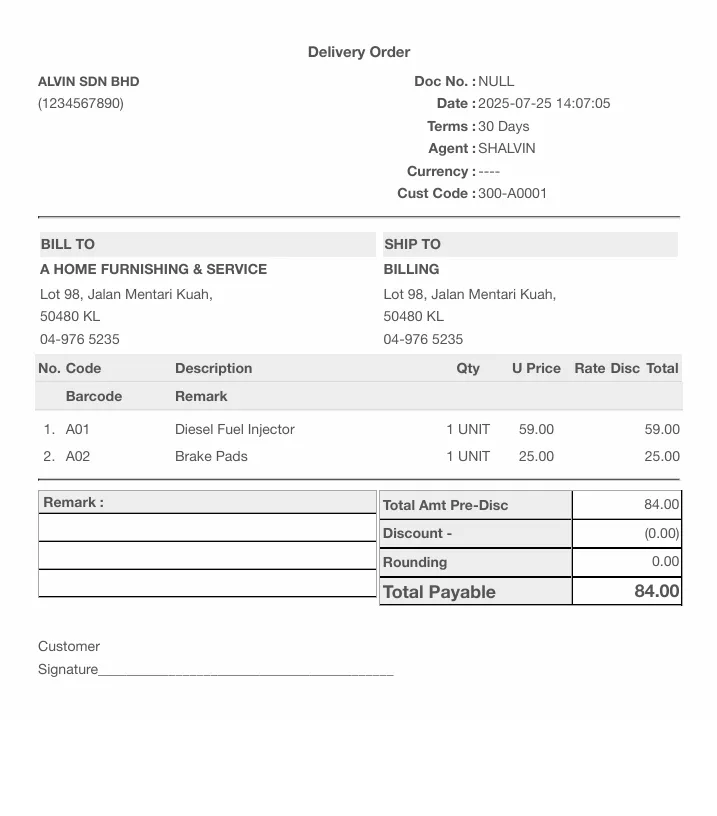
Author: Christopher Yip
Date Published: 30 April 2025
How to Create WhatsApp Chatbot: Full Tutorial & Use Cases
In Malaysia, WhatsApp isn’t just an app. It’s part of daily life. Customers text businesses like they text friends: casually, instantly, and with the expectation of a reply. But here’s the catch. Most businesses still treat WhatsApp like a side channel, replying manually, inconsistently, or worse, missing out on conversations entirely.
The shift isn’t about adopting new tools. It’s about adapting to a new way people want to talk to you. This guide explores how you can meet that shift head on by building your own WhatsApp chatbot, one that fits your business, speaks your customer's language, and grows with you.
Key Takeaways
What is a WhatsApp Chatbot?
Why Does Your Business Need a WhatsApp Chatbot?
Key Benefits of a WhatsApp Chatbot
Step-by-Step Guide on How to Create a WhatsApp Chatbot
WhatsApp Chatbot Use Case on Different Industries
What is A WhatsApp Chatbot?
A WhatsApp chatbot is a smart assistant that chats with your customers through WhatsApp. It can answer questions, take orders, share updates, and even help people shop or book services, all without needing a human on the other end.
Think of it like having someone in your team who never sleeps, responds instantly, and knows exactly what to say. Some businesses use simple, pre-set replies, while others take it a step further by using AI to give more personal and natural answers. Either way, it helps you stay connected with your customers on the app they use every day.

Why Does Your Business Need a WhatsApp Chatbot?
With WhatsApp being one of the most widely used messaging apps in the world, it's becoming harder for businesses to ignore its role in customer communication. More and more people are choosing messaging apps over traditional channels like email or phone calls when reaching out to a company.
A WhatsApp chatbot helps businesses stay available, respond faster, and handle large volumes of messages efficiently. Here are some key statistics that show why it matters:
1.4 billion people use messaging apps like WhatsApp to communicate with businesses.
53% of customers are more likely to shop with a business they can message directly.
74% of consumers use messaging apps specifically to seek customer service or support.
Over 175 million messages are sent daily to business accounts through WhatsApp
WhatsApp boasts over 2.7 billion monthly active users, making it a powerful platform to reach a global audience.
These numbers show that people want fast, simple ways to connect with businesses, and a WhatsApp chatbot fits naturally into that flow by turning everyday conversations into useful touchpoints that drive action and build trust.
83%
of consumers use messaging apps to contact businesses and learn about their products and services.
Key Benefits of a WhatsApp Chatbot
For businesses in Malaysia, where customers expect quick replies and multilingual support, WhatsApp bots are proved to be a smart solution. Here’s how they can make a real difference:
| Feature | Description |
|---|---|
| Always on, even after hours | Customers might message your business at night, on weekends, or during public holidays. WhatsApp bot makes sure they still get an instant response, even when your team isn’t available. |
| Faster responses, happier customers | Nobody likes waiting. WhatsApp chatbot help answer common questions right away, keeping response times short and customer satisfaction high. |
| Multilingual support for a diverse market | Malaysia is a multilingual country. A WhatsApp bot can switch between Malay, Chinese, and English, making it easier to serve different communities in their preferred language. |
| Manage high volumes without extra manpower | During sales, promotions, or festive seasons, the number of messages can spike. WhatsApp bots help handle the load without needing to grow your team. |
| Let your team focus on complex tasks | By taking care of routine questions, the bot frees up your staff to focus on things that require more attention or a human touch. |
| Guide customers and promote relevant products | WhatsApp bots can recommend products based on customer preferences or past behaviour, opening up opportunities for upselling in a subtle, helpful way. |
| Capture and nurture leads automatically | When someone messages your business, the bot can collect basic info and keep the conversation going with follow-up messages or reminders. |
| Share offers and announcements easily | Whether it’s a weekend promotion or a limited-time deal, the bot can help spread the word to your customer base in just a few taps. |
| Build a smoother customer experience | All these small improvements add up to a better overall journey for your customers - one that feels quicker, more personal, and less frustrating. |
67%
of people now expect to communicate with businesses through messaging apps, instead of traditional methods like email or phone calls.
Step-by-Step Guide on How to Create a WhatsApp Chatbot
1. Get Access to the WhatsApp Business Platform
To get started, you need access to the WhatsApp Business Platform. This is different from the free WhatsApp Business App - it gives you the tools to send automated replies and use chatbots.
You can apply for the API through a WhatsApp Business Solution Provider (BSP) like SleekFlow, Twilio, or Meta’s partners. Here’s what’s usually required:
Your business name and website
A verified Facebook Business Manager account
A phone number not already linked to a WhatsApp account
Business details (industry, size, contact person)
Note: Approval might take a few days to a few weeks depending on the provider and information submitted.
2. Decide What You Want Your Chatbot To Do
Before jumping in, take a moment to plan. Don’t just think “I want a bot.” Think about what problems you want to solve. Here are some common use cases:
Answer FAQs instantly
Guide customers through booking, ordering, or payment
Show order status or delivery updates
Collect leads or feedback
Offer product recommendations
👉 Ask yourself:
What kind of questions do customers ask again and again?
Where are we losing customers in the process (slow replies, unclear steps)?
When should a human take over?
3. Build the Conversation Flow
Once you’re clear on what your bot should do, it’s time to map out the conversation. There are two basic types of flows:
Guided (rule-based): Your chatbot asks questions and provides preset options. Great for structured processes like booking, support, or order tracking.
Open-ended (AI-powered): Customers ask questions freely and your bot uses AI to understand and respond. Better for more dynamic conversations, but needs training.
Choose the flow that matches your goals. You can also blend both into a hybrid setup like SalesAI does, so your bot offers guided options for common tasks and still understands open-ended questions through AI.
4. Test Everything Before Going Live
Never launch a chatbot without testing. You’ll want to make sure:
It replies correctly to common questions
It guides users smoothly
It hands over to a human when needed
It works well on both mobile and desktop
Logic errors (wrong replies or broken flows)
Typo handling (does it understand if the customer misspells?)
Response speed
5. Connect to Your CRM or Sales System
To personalize the chat experience, connect your chatbot to your existing systems, like a CRM system, eCommerce store, or even a helpdesk. This way, your chatbot can:
Instantly recognize returning customers and greet them by name
Pull real-time data like recent orders, payment status, or support tickets
Make smarter suggestions based on customer history
Assign sales leads to the right rep automatically
This not only improves customer experience, but also streamlines your internal workflow with fewer silos, less manual work.
6. Launch and Monitor
Once everything’s ready, launch your chatbot and start tracking performance. Most platforms show useful data like:
Number of conversations started
Completion rate
Common drop-off points
FAQ usage
Check these regularly and keep improving:
Add new answers to the bot as new questions appear
Refine flows to reduce drop-offs
Use reports to train your team better
54%
of consumers prefer receiving marketing communications and order updates through WhatsApp.
WhatsApp Chatbot Use Cases Across Different Industries
WhatsApp chatbots aren’t just for one type of business, they can be tailored to almost any industry to solve real problems and make things run smoother. Here’s how different sectors are putting them to work:
1. Retail & eCommerce
Chatbot for retail and eCommerce are handling everything from confirming orders to answering product questions and even nudging customers about abandoned carts. Instead of waiting for emails, shoppers can just check WhatsApp to track their delivery or ask about returns.
2. Banking and Financial Services
The banking and financial services sector uses WhatsApp bots to give customers 24/7 access to account balances, transaction histories, and even fraud alerts. It’s secure, efficient, and way more convenient than waiting on hold for a call center.
3. Healthcare
In healthcare, chatbots help patients book appointments, get reminders, or check symptoms without needing to call a clinic. Hospitals can even share lab results and respond to common medical inquiries.
4. Automotive
The automotive industry uses WhatsApp bots for booking service appointments, scheduling test drives, sharing car details, and following up on inquiries, giving customers a smoother showroom-to-service experience.
5. Educational institutions
Educational institutions are also getting smarter with chat. From answering student FAQs to guiding parents through the enrollment process or sending exam reminders, WhatsApp bots make communication faster and easier for both sides.
6. Travel and Hospitality
For the travel and hospitality industry, these bots are lifesavers. Think booking confirmations, itinerary updates, hotel check-in instructions and all of them is delivered instantly. It’s like having a virtual travel assistant in your pocket.
7. Real-Estate
The real estate world benefits too. Chatbots can qualify leads, send property listings, schedule viewings, or even provide virtual tours. This saves agents time and gives buyers info on demand, no matter the hour.
8. Telecom
Telecom companies use WhatsApp bots to help customers check their data usage, pay bills, upgrade plans, or troubleshoot common issues. It’s a smart way to reduce call center volume and keep customers in control.
9. Logistics
In logistics and supply chain, WhatsApp chatbots can offer real-time tracking updates, handle delivery rescheduling, and respond to shipment queries, improving transparency and keeping customers in the loop.
10. Public Sector
Even the public sector is catching on. Governments use chatbots to send out public health alerts, help citizens renew licenses, or answer FAQs about services. It cuts through red tape and gives people faster access to help.
11. F&B Businesses
Cafes and restaurants can use chatbots for menu browsing, taking orders, managing reservations, or rewarding loyal customers. It’s a great way to keep things moving during busy hours.
12. Insurance Companies
Insurance companies benefit by automating claim status updates, sending policy reminders, and answering questions about coverage. For customers, it means quicker responses during stressful moments.
What makes WhatsApp chatbots so powerful is their flexibility, they don’t just automate tasks, they adapt to the language of each industry. In finance, they speak in transactions. In retail, it’s about fast orders and instant answers. In healthcare, they offer care with convenience. No matter the business, a WhatsApp chatbot can slot into the daily workflow, acting like an always-on assistant that scales with your needs. It’s not just about automation, it’s about creating smarter, faster customer journeys tailored to your world.
Final Thoughts
WhatsApp chatbots are revolutionizing customer engagement by evolving with your business needs. They go beyond basic automation to provide dynamic, personalized experiences, enabling businesses to meet customer expectations for fast, convenient service. As both customer behavior and technology progress, these chatbots will only grow smarter, empowering businesses to stay ahead of the curve and foster long-term customer loyalty.
FAQs
Is WhatsApp Chatbot Free?
WhatsApp itself doesn’t charge for creating a chatbot, but using a WhatsApp chatbot usually involves: A Business Solution Provider (BSP) that may charge for the platform or messages Conversation fees from WhatsApp (based on type of conversation and region) Some platforms, like Sales AI, offer a 14 days free trial so you can test the chatbot without any upfront cost.
Do I need coding skills to use WhatsApp bot?
Not necessary. Many modern platforms let you build WhatsApp chatbots using low-code or no-code tools just by writing simple prompts and setting reply options. You don’t need any programming experience to get started.
How does WhatsApp Chatbot work?
A WhatsApp chatbot automates replies to customers inside WhatsApp. It works by:
✅Showing prompts or reply buttons to guide users
✅Responding based on selected options or typed messages
✅Connecting with your backend (CRM, order system, etc.)
✅If needed Optionally handing over to a human agent for more complex questions




Mail
Facebook
LinkedIn
X
Pinterest